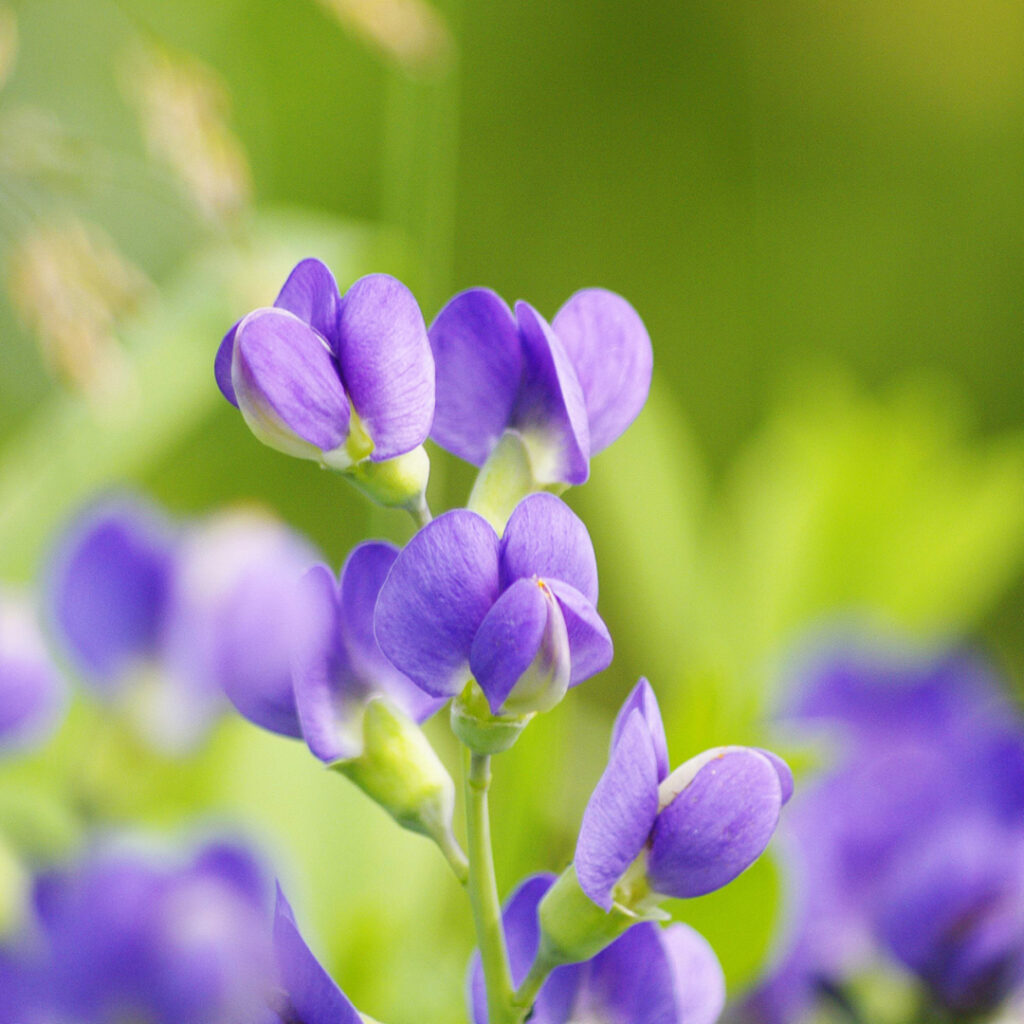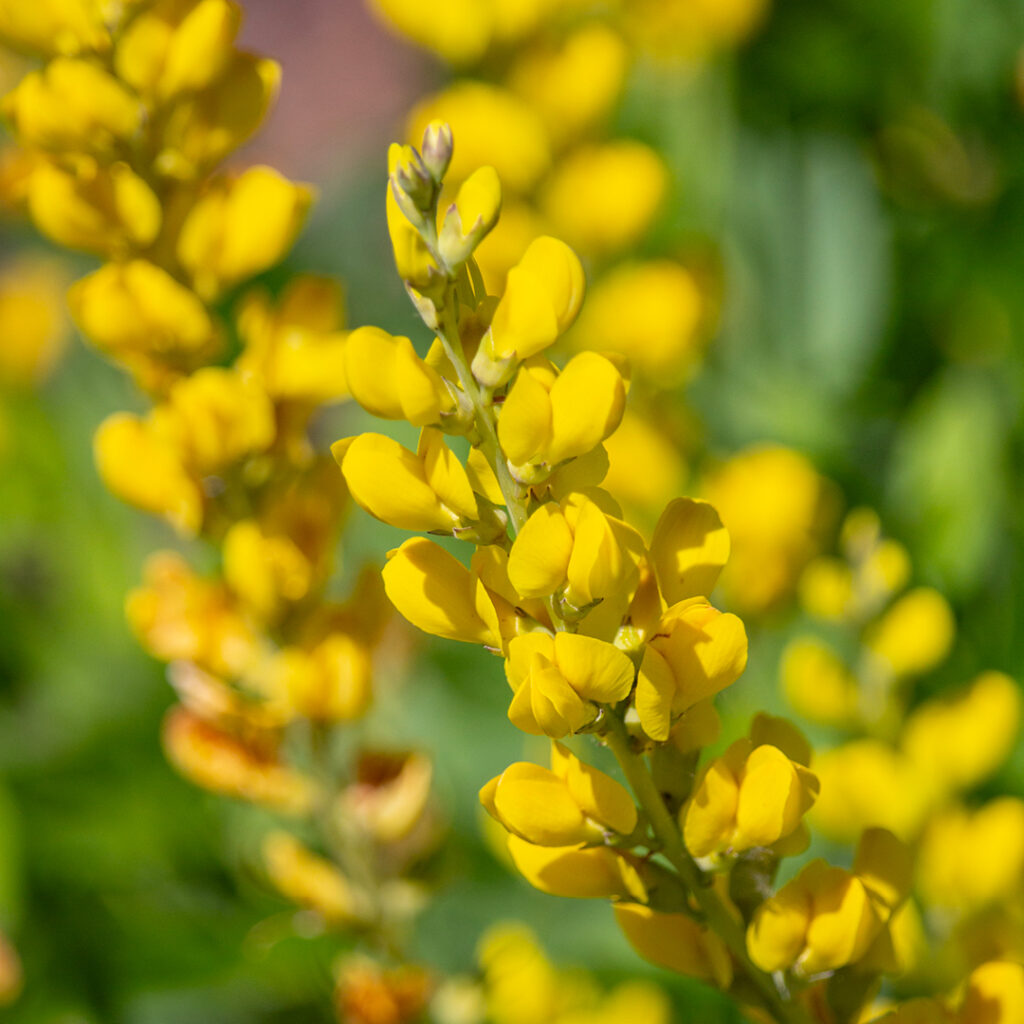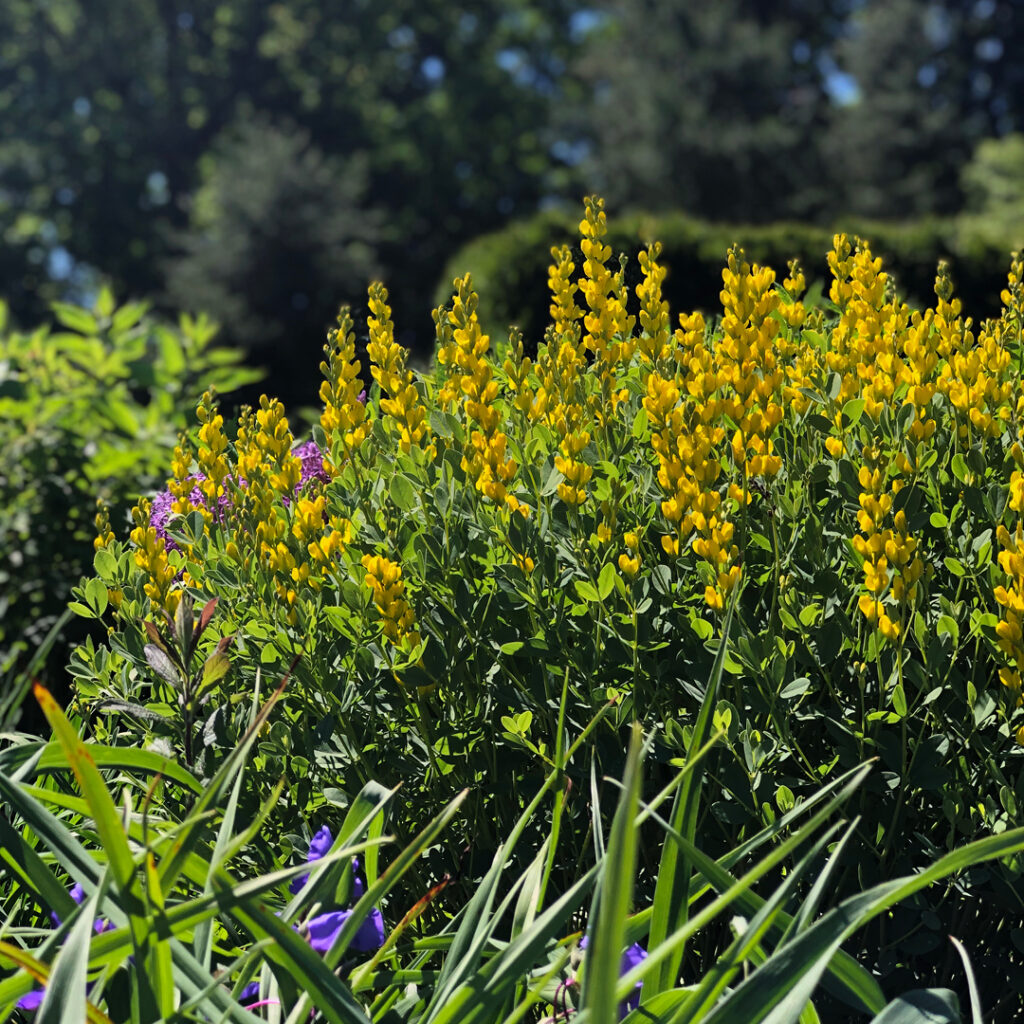Baptisia australis, commonly known as false indigo or wild indigo, is a stunning perennial plant beloved by gardeners in USDA Hardiness Zones 3 through 9. It offers numerous benefits, from environmental to aesthetic, while also being relatively easy to care for. Here are some reasons why adding Baptisia to your garden can be a great choice:
Baptisia Benefits
Native Plant:
Baptisia australis is native to North America, making it well-suited to local environmental conditions. By planting native species like Baptisia, you can support local ecosystems and provide habitat and food for native wildlife, including pollinators like bees, butterflies, and hummingbirds.
Soil Health:
Baptisia is a nitrogen-fixing plant, meaning it has a symbiotic relationship with certain soil bacteria that allows it to convert atmospheric nitrogen into a form that can be used by plants. This helps improve soil fertility and overall soil health, reducing the need for synthetic fertilizers.
Beautiful Flowers:
Baptisia australis produces stunning spikes of deep blue to purple lupine-like flowers in late spring to early summer, adding a vibrant splash of color to the garden and bouquets.
Attractive Foliage:
The foliage is equally appealing as the flowers. With blue-green eucalyptus-like leaves, Baptisia adds texture and interest to the garden even when the plant is not in bloom. The leaves are a long-lasting cut foliage for summer bouquets.
Architectural Form:
The upright, bushy growth habit of Baptisia australis adds structure and architectural interest to garden beds and borders. Even when not in bloom, its foliage provides a handsome backdrop for other plants in the garden.
Seed Pods:
After the flowers fade, Baptisia develops interesting seed pods that persist into fall and winter, adding visual interest and texture to the garden landscape.
Low Maintenance:
Once established, Baptisia australis is a low-maintenance plant that requires minimal care. It is drought-tolerant and thrives in a wide range of soil types, including poor, sandy, or clay soils. It is also relatively pest and disease-resistant, further reducing the need for human intervention.
Longevity:
Baptisia australis is a long-lived perennial, providing decades of beauty and enjoyment in the garden without the need for division or replacement.
Planting and Growing Baptisia
When growing Baptisia, selecting the right location is crucial for its success. Baptisia thrives in full sun to partial shade, preferring at least six hours of sunlight daily. Ensure that the soil is well-draining, as Baptisia does not tolerate waterlogged conditions. While it can adapt to various soil types, it prefers slightly acidic to neutral soil with a pH of 6.0 to 7.0. This large perennial can grow up to 4 feet wide and tall, giving you a generous bang for your buck. Make sure that you provide it with the room it needs to grow to full maturity as it resents being moved or divided.
Spring or fall is the best time to plant Baptisia. Begin preparing the planting area by loosening the soil and incorporating organic matter such as compost. Dig a hole slightly larger than the plant’s root ball and place the Baptisia at the same depth it was previously growing. Backfill the hole with soil, gently firming it around the plant, and water thoroughly. Adding a layer of mulch to the surrounding soil will help prevent the newly planted perennial’s roots from drying too quickly.
Once established, Baptisia is relatively low-maintenance. Water newly planted Baptisia regularly during the first growing season to help it establish a robust root system. Afterward, Baptisia is drought-tolerant and typically only requires supplemental watering during prolonged dry spells.
In early spring, before new growth emerges, prune Baptisia by cutting back the previous year’s growth to the ground. This encourages healthy new growth and helps maintain the plant’s shape. At this time, apply a layer of mulch around the base of the plant to conserve moisture, suppress weeds, and insulate the roots.
Baptisia Garden and Landscape Design
Baptisia can be used in a variety of ways to create stunning effects. It works well as a border plant, edging pathways, or defining garden beds. Planted en masse, it can create a bold statement in the landscape. Planted alone, it will provide a striking focal point. Baptisia also pairs beautifully with other perennials and shrubs, adding depth and dimension to mixed borders and perennial gardens.
For a naturalistic look, Baptisia can be incorporated into prairie or meadow-style plantings, where it can mingle with grasses and wildflowers to create a relaxed atmosphere. It can also be used in other informal designs, such as densely planted cottage gardens, where it will capture attention in the early part of the growing season. Give it a try in formal borders, where its upright habit and structured foliage provide a sense of order and balance. Overall, Baptisia is a plant that finds its way to work well in just about any garden situation.
Beautiful Baptisia should grace every garden! Not only does this perennial provide unique and vibrant flowers, foliage, and seed pods on a plant with a lovely architectural form, but it also offers environmental benefits, such as supporting native wildlife and improving soil health. Its ease of care makes it an excellent choice for both beginner and experienced gardeners looking to create a sustainable and visually appealing landscape. Plant a few today!







